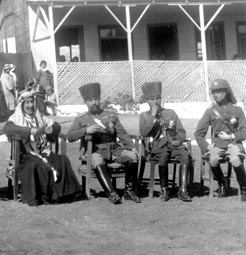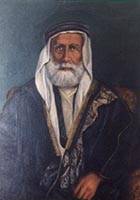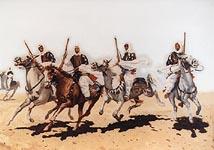Although the Sykes-Picot Agreement was modified considerably in practice, it established a framework for the mandate system which was imposed in the years following the war. Near the end of 1918, the Hashemite Emir Faisal set up an independent government in Damascus Syria and his elder brother Abdullah was offered the crown of Iraq Britain the mandates over Transjordan, Palestine and Iraq France was given the mandate over Syria and Lebanon , but had to take Damascus
In November 1920, Emir (later King) Abdullah led forces from the Hijaz to restore his brother’s throne in the Kingdom of Syria Syria was already well planted, and Emir Abdullah was obliged to delay his pan-Arab goals and focus on forming a government in Amman land of Transjordan Transjordan . Confident that his plans for the unity of the Arab nation would eventually come to fruition, the emir established the first centralized governmental system in what is now modern Jordan

Left to right: King Ali of the Hijaz, King Abdullah of Jordan, Crown Prince (later King) Talal of Jordan, Abdul llah (Regent of Iraq), circa 1937.
© Royal Hashemite Court Archives
King Faisal I, meanwhile, assumed the throne of the
The period between the two world wars was one of consolidation and institutionalization in
Between 1928 and 1946, a series of Anglo-Transjordanian treaties led to almost full independence for Transjordan . While Britain Transjordan . In exchange for providing military facilities within Transjordan , Britain








